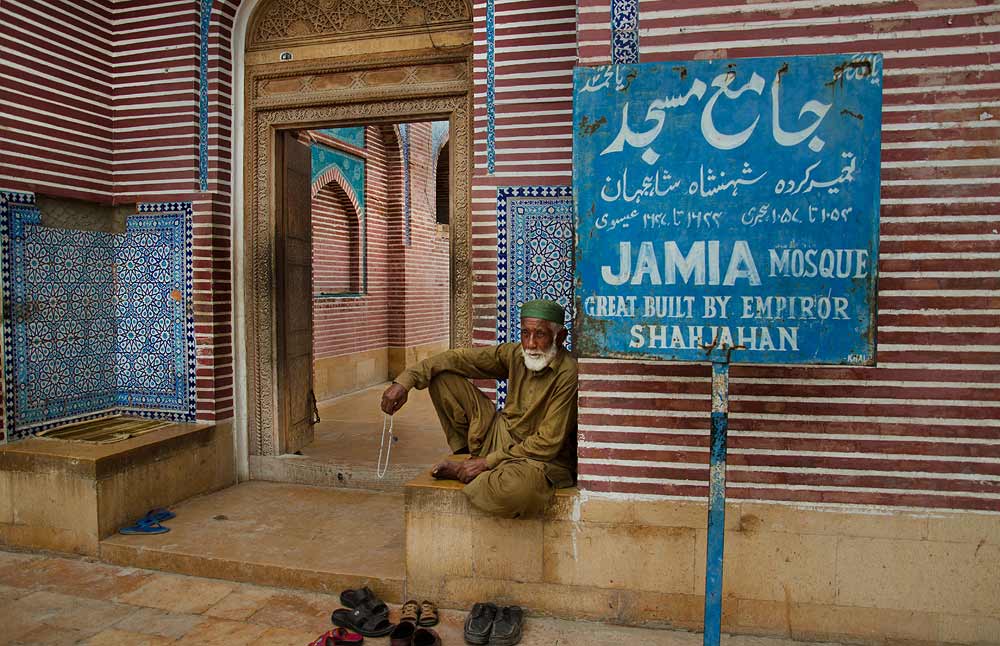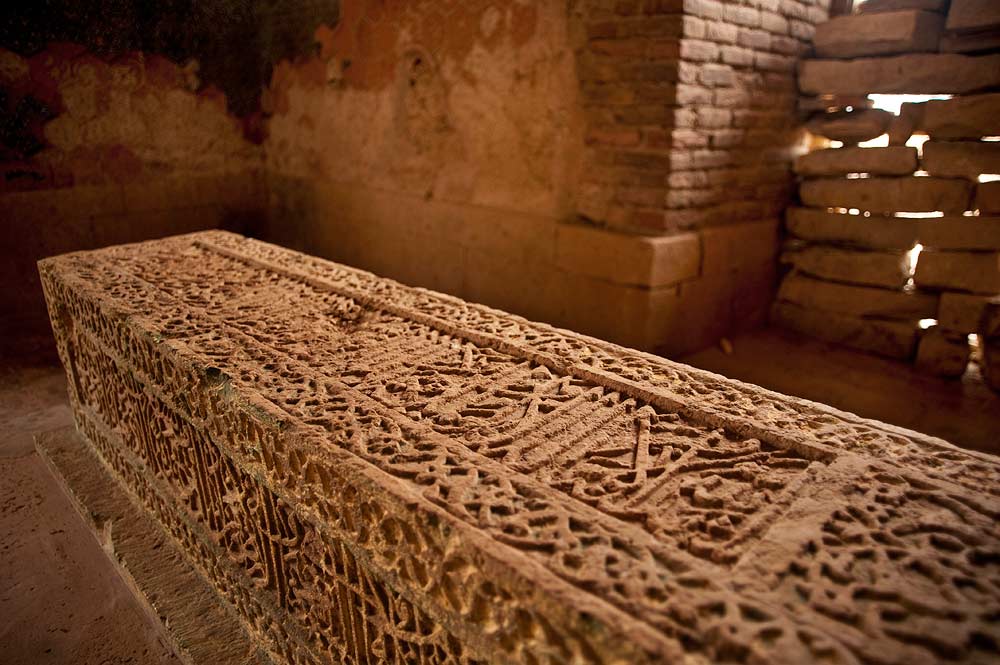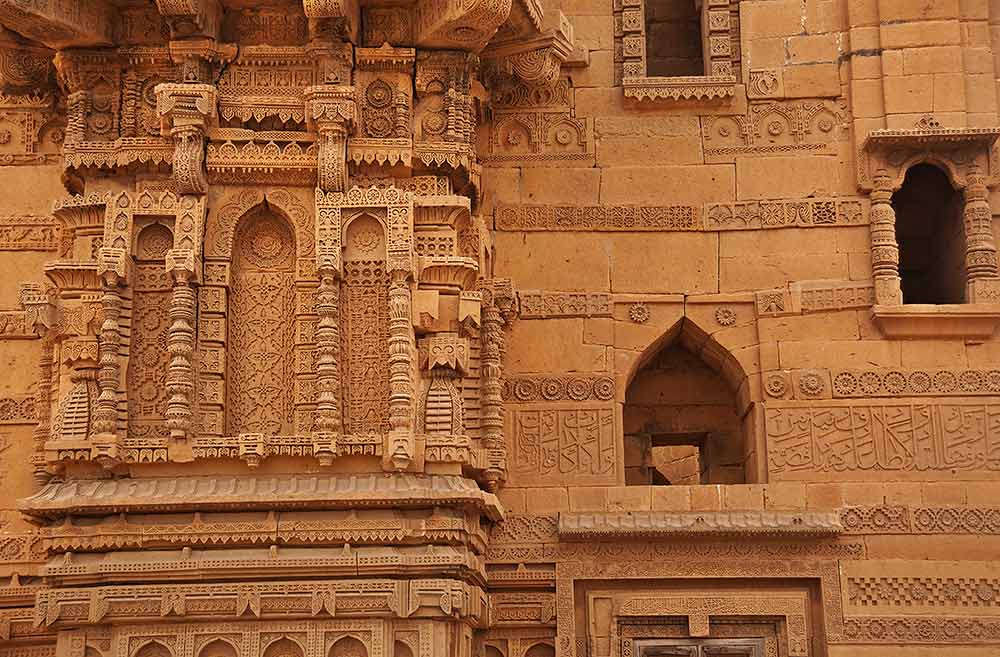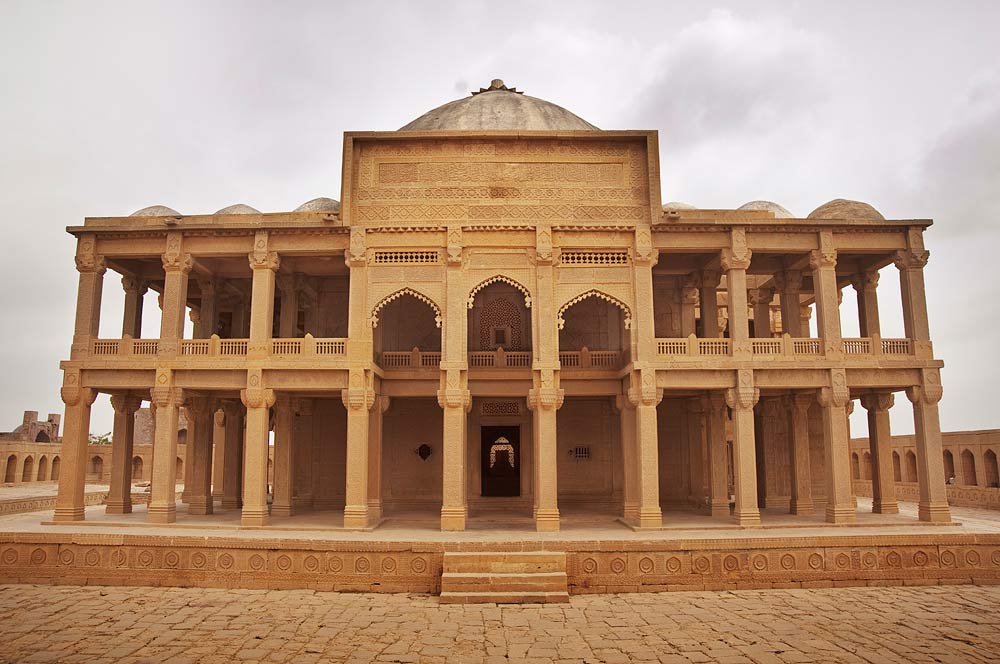Thatta: the ancient city of kings






![The main Mihrab of the mosque in its front hall from where the prayers are led. It is said that Shah Jahan built this mosque as a gesture of gratitude to the people of Thatta for sheltering him during his youth after his father, Emperor Jahangir banished him from Delhi. [Image is a stitch of 5 photographs] - Photo by Nadir Siddiqi/Dawn.com The main Mihrab of the mosque in its front hall from where the prayers are led. It is said that Shah Jahan built this mosque as a gesture of gratitude to the people of Thatta for sheltering him during his youth after his father, Emperor Jahangir banished him from Delhi. [Image is a stitch of 5 photographs] - Photo by Nadir Siddiqi/Dawn.com](https://i.dawn.com/2012/10/a-untitled_panorama3.jpg)


![A view of two kinds of tomb built during the Tarkhan era. One [left] is made of the familiar stone but the other is the brick tomb of Sultan Ibrahim, the son of Isa Khan I (and brother of Isa Khan II whose tomb is pictured earlier). Ibrahim died in 1550. - Photo by Nadir Siddiqi/Dawn.com A view of two kinds of tomb built during the Tarkhan era. One [left] is made of the familiar stone but the other is the brick tomb of Sultan Ibrahim, the son of Isa Khan I (and brother of Isa Khan II whose tomb is pictured earlier). Ibrahim died in 1550. - Photo by Nadir Siddiqi/Dawn.com](https://i.dawn.com/2012/10/c-makli-photos-1-of-40.jpg)



![A brick tomb of the Samma royal family members. Samma were the first dynasty who made Thatta their capital, and this is the tomb of Jam Unner, who was their first and founding ruler. [Image is a stitch of 4 photographs] - Photo by Nadir Siddiqi/Dawn.com A brick tomb of the Samma royal family members. Samma were the first dynasty who made Thatta their capital, and this is the tomb of Jam Unner, who was their first and founding ruler. [Image is a stitch of 4 photographs] - Photo by Nadir Siddiqi/Dawn.com](https://i.dawn.com/2012/10/d-untitled_panorama2.jpg)
![Two different kinds of tombs of the same dynasty belonging to different rulers. The Jam Tamachi grave [left] has an umbrella type dome with yellow stone carved pillars. Tamachi was the son of Jam Unner and the second ruler of the Samma dynasty. Jam Nindo, whose tomb is on the right - was the second last. - Photo by Sara Faruqi/Dawn.com Two different kinds of tombs of the same dynasty belonging to different rulers. The Jam Tamachi grave [left] has an umbrella type dome with yellow stone carved pillars. Tamachi was the son of Jam Unner and the second ruler of the Samma dynasty. Jam Nindo, whose tomb is on the right - was the second last. - Photo by Sara Faruqi/Dawn.com](https://i.dawn.com/2012/10/e-makli-aug-2012-sara-19.jpg)





![An internal view of the dome-less tomb of Jam Nindo. Archealogist Dr. Ahmed Hassan Dani says that it is the only example of Sindhi-Islamic art in the whole subcontinent. [Image is a stitch of 4 photographs] - Photo by Nadir Siddiqi/Dawn.com An internal view of the dome-less tomb of Jam Nindo. Archealogist Dr. Ahmed Hassan Dani says that it is the only example of Sindhi-Islamic art in the whole subcontinent. [Image is a stitch of 4 photographs] - Photo by Nadir Siddiqi/Dawn.com](https://i.dawn.com/2012/10/e-untitled_panorama1.jpg)





![A simple grave on a platform, with a sign that says ?Mai Makli jo Qabar? - or the grave of Mai Makli. The grave is situated adjacent to the southern wall of the Jamia Mosque [Next Photo]. Makli means Little Mecca or Mecca-like; some relate it with a devout and pious woman "Mai Makli". It is believed that her prayers averted Sultan Firuz Shah Tughlaq's conquest of Thatta. He could only seize it three days after her death. - Photo by Sara Faruqi/Dawn.com A simple grave on a platform, with a sign that says ?Mai Makli jo Qabar? - or the grave of Mai Makli. The grave is situated adjacent to the southern wall of the Jamia Mosque [Next Photo]. Makli means Little Mecca or Mecca-like; some relate it with a devout and pious woman "Mai Makli". It is believed that her prayers averted Sultan Firuz Shah Tughlaq's conquest of Thatta. He could only seize it three days after her death. - Photo by Sara Faruqi/Dawn.com](https://i.dawn.com/2012/10/g-makli-aug-2012-sara-15.jpg)

Thatta is an ancient city of the Indus delta. The city is situated about 100 kilometers from Karachi, Pakistan via the national highway. It had great importance in history and today is famous for its archeological sites and centuries old monuments, which are great tourist attractions. [Click on photos to enlarge]
According to historians Thatta may have been the main port on the Indus in the time of Alexander the Great's invasion. The river Indus has changed its course many times since the days of Alexander, and this ancient site of Patala has been subject to much conjecture (the river changes course slowly due to a process called "siltation" which is essentially water pollution by fine silt particles).
Thatta was the capital of three successive dynasties, the traces of which are evident in the Makli necropolis, which spreads over a twelve square kilometer area. These dynasties are: Samma (1335-1520), Arghun (1520-1555) and Tarkhan (1555-1665).
There are archeological sites in the city and on its outskirts. The most famous of these sites is the Makli Hill, which is the biggest necropolis in the world and about three kilometers from Thatta.
Because of its cultural and archeological importance, in the 1980s UNESCO listed the Makli necropolis as a World Heritage Site. The most preserved area of the necropolis is Makli Hill, which comprises about 35 monuments and contains four different schools of architecture and art made from stone to brick and glaze.
The monuments here also tell the story of external cultural influences in Lower Sindh, including Hindu, Central Asian and Persian cultures.
Later on, the city of Thatta was ruled by the Mughal emperors of Delhi through its governors, leaving an indelible mark on the shape of the monuments there. The most famous example of Mughal architecture is the Shah Jahan Mosque, constructed in the latter half of the seventeenth century.
Thatta played an important role in the history of Sindh and the city was constantly renovated from the 14 to 18 century. But in 1739, when the province of Sindh was taken over by Nadir Shah of Persia, Thatta entered into a period of decline. However the four centuries that comprise the golden age of Thatta have left their traces on the form of monuments in the region. - Text by Mukhtar Azad












































